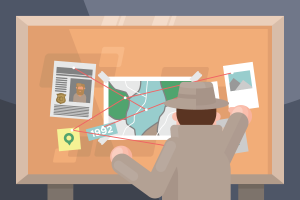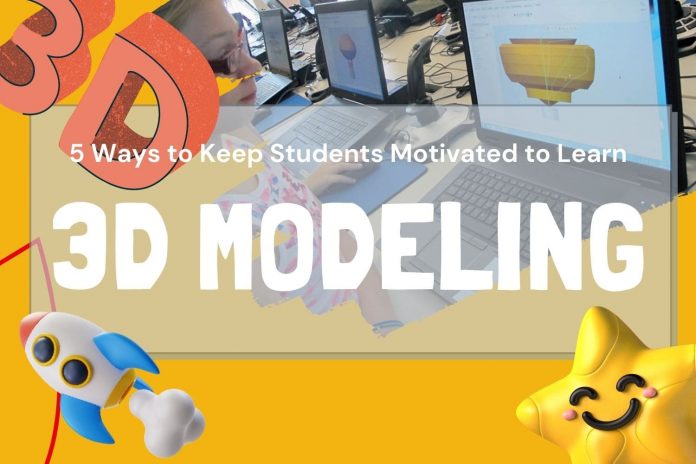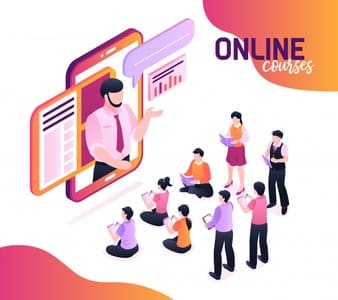Coding is the future. This is why here are some tips to learn coding.
You might not be aware of it, but modern living is built upon coding, from the apps and online games you use on your smartphone to the Internet of Things to electric cars.
And by the looks of it, coding will not go away like some passing trend. Wouldn’t it be nice if your child becomes a part of that future?
3 Top Benefits of Learning Coding as a Child
According to various studies and statistics, there is a shortage of professionals who are well-versed in coding in the UK. Worse, that shortage is seen to linger for a long time. But for every setback, there’s an opportunity – children who learn how to code have a leg up over those who did not acquire this valuable skill later in life when they enter the workforce.
Coding is now being taught in most British schools as part of the English national curriculum starting at primary school. However, at times schools lack adequate resources and well-trained staff to teach the best and most advanced coding skills.
What are the reasons for the importance of children learning to code?
According to Software Academy, one of the UK’s leading coding course providers, there are plenty of reasons why young kids should learn to code, apart from lucrative career opportunities waiting for them.
1. Your child learns to be a better problem solver

In work and life, a problem solver has a distinct edge over their peers.
When a young child learns how to code, they understand that the problem at hand can be approached using different perspectives.
Apart from that, when a program is stripped down, they’ll see that the code can be modified or even improved.
More importantly, your child can become more confident in solving problems, knowing full well that they can find an optimal solution with patience and creativity.
2. Your child learns to accept failures more graciously

As you grow older, you learn to accept that failures are part and parcel of life. But to a young kid, trying your best but ending in failure can be frustrating.
One great thing about learning how to code is your little one learns to accept failures more graciously. That means that instead of moping or getting angry, the better approach would be to revisit that problem and try new things.
3. Your child learns to embrace their creativity

More often than not, solving a problem entails trying new approaches and experimenting with new methods. If one thing is not providing the expected results, what’s the sense of using it over and over again.
Coding can help your child to develop and embrace their innate creativity. By fostering an open environment where young people can try new things without being reprimanded or curtailed, they build confidence in and out of the computer room.
5 best ways to encourage your kid to learn to code
Now that you know a few of the benefits of learning to code, the next order of business is convincing your little one to give coding classes a try.
Some kids will warm up to the idea without much resistance, driven by their love of technology. Others may be hesitant or downright hate the idea of going to coding classes.
If your child belongs to the latter camp, there are a few things you can do to motivate them to try coding tutorials. Listed here are a few helpful tips.
1. Make it about creativity

Your little one might be hesitant to enrol in a coding course because they think it’s all about science and math.
While they’re not entirely wrong, coding goes beyond those core subjects. At the core of the subject matter is creation, including games and apps. Emphasize that coding is for everyone to learn and enjoy. More importantly, tell your young ones that they’ll get to create loads of cool stuff.
2. Let them try it
Another way to gently nudge your kid to learn to code is to try different computing online courses, or online games and apps, some of which are free. These can give them a glimpse of what’s in store for them should they wish to try coding tutorials more extensively.
3. Take your child’s interests into account

Perhaps you’re having difficulty convincing your child to learn to code because you’ve been emphasizing writing codes.
The great thing about coding is that it can be used in various interesting fields, including web development, designing games, and animation.
4. Enlist the help of their peers
It can become easier for your child to give coding classes a try if they know that their siblings and friends are also interested to learn. Having people around them, that share the same love for coding will help sustain their interest.
5. Encourage problem-solving

Although coding allows people to produce cool stuff, at its heart, it’s all about the joy of solving a knotty issue.
To entice your kid to appreciate and love coding, it would be helpful to present them with opportunities for problem-solving constantly.
It can be as easy as providing them with puzzles or encouraging them to experiment and try new approaches. Free online games like Solitaire may not immediately strike you as a coding activity, however, they encourage problem-solving and creative thinking skills that are a precursor for coding, plus children apply computer skills too while playing.
Learning how to code means investing in your kid’s future
As a parent, you want to give your precious child everything they need for a brighter future.
And although some kids might not want to pursue a career related to coding, the benefits that they get from learning to code can help them find success in various aspects of their lives, now and beyond. Because understanding the building blocks of what we use every day such as smartphones and computers, can greatly help them to be safer online and use digital devices with more confidence.










 First and foremost, biology would demand time and attention. To conquer A Level Biology, you should set a study schedule where your child would be able to dedicate their attention and focus. During this time, your child should be free from distractions and should be equipped with the right resources so they are able to
First and foremost, biology would demand time and attention. To conquer A Level Biology, you should set a study schedule where your child would be able to dedicate their attention and focus. During this time, your child should be free from distractions and should be equipped with the right resources so they are able to  As much as there are many different learning styles, there is also a myriad of learning tools available – even for biology. You and your child must work together to find the right learning tool for them.
As much as there are many different learning styles, there is also a myriad of learning tools available – even for biology. You and your child must work together to find the right learning tool for them. Actively communicating one’s knowledge of a subject, including Biology, helps the child recall the topic. Find opportunities where your child may be able to present to you, and then you can ask questions later to confirm their knowledge of the subject matter. Work together with your child during times when they have problems in elaborating a thought or are unable to answer your questions. This will also help to build their confidence.
Actively communicating one’s knowledge of a subject, including Biology, helps the child recall the topic. Find opportunities where your child may be able to present to you, and then you can ask questions later to confirm their knowledge of the subject matter. Work together with your child during times when they have problems in elaborating a thought or are unable to answer your questions. This will also help to build their confidence. A Level Biology comes with learning assessments to gauge your child’s understanding of the course. It is ideal to expose your child to various practice exams in subjects like Biology on a regular basis so they will become familiar with the usual topics and questions that they will face when taking official assessments. Your child would also be made aware of the format of the A Level exams so they will not be taken by surprise and feel ready and confident.
A Level Biology comes with learning assessments to gauge your child’s understanding of the course. It is ideal to expose your child to various practice exams in subjects like Biology on a regular basis so they will become familiar with the usual topics and questions that they will face when taking official assessments. Your child would also be made aware of the format of the A Level exams so they will not be taken by surprise and feel ready and confident. The first 4 strategies are helpful in their own right. But if you want to identify the best strategy in helping your child master A Level Biology in Singapore, it is advisable to consult experts such as
The first 4 strategies are helpful in their own right. But if you want to identify the best strategy in helping your child master A Level Biology in Singapore, it is advisable to consult experts such as 
 “Learning is an act of curiosity and transformation. It is the powerful lever between your current world and a new world where you have a new experience.”
“Learning is an act of curiosity and transformation. It is the powerful lever between your current world and a new world where you have a new experience.” Modern learning has a new emphasis.
Modern learning has a new emphasis. By the time students leave college, we want them to be able to apply what they’ve learned to the outside world. That’s why understanding the learning process and helping students navigate it is so important.
By the time students leave college, we want them to be able to apply what they’ve learned to the outside world. That’s why understanding the learning process and helping students navigate it is so important. If we want students to journey towards deep learning, we need to be aware of how to achieve it.
If we want students to journey towards deep learning, we need to be aware of how to achieve it. Good note taking is just like learning itself. To take good notes is to follow a process that leads to true, individual understanding.
Good note taking is just like learning itself. To take good notes is to follow a process that leads to true, individual understanding. You can’t pause a professor. You can’t immediately know what pieces of information to prioritize in your notes. And there’s always a trade-off between trying to get down as much as possible and focusing on absorbing the content at the moment.
You can’t pause a professor. You can’t immediately know what pieces of information to prioritize in your notes. And there’s always a trade-off between trying to get down as much as possible and focusing on absorbing the content at the moment. The important thing to understand is that note taking has two core functions.
The important thing to understand is that note taking has two core functions.
 SQL or Structured Query Language is used extensively for manipulating databases. The
SQL or Structured Query Language is used extensively for manipulating databases. The  The gamer must program a set of elevators to carry the maximum number of people to the specified floors with minimum trips.
The gamer must program a set of elevators to carry the maximum number of people to the specified floors with minimum trips. Once you have mastered Elevator Saga, it is time to learn a little bit of AI. After all, what can be cooler than saying – I was
Once you have mastered Elevator Saga, it is time to learn a little bit of AI. After all, what can be cooler than saying – I was  Websites are the backbone of the internet, and CSS is the backbone of websites. CSS or Cascading Style Sheets place HTML (HyperText Markup Language) elements on responsive web pages.
Websites are the backbone of the internet, and CSS is the backbone of websites. CSS or Cascading Style Sheets place HTML (HyperText Markup Language) elements on responsive web pages. It is the most well-known sandbox game made by none other than Majong and Microsoft. It can be equally enjoyed regardless of age because even
It is the most well-known sandbox game made by none other than Majong and Microsoft. It can be equally enjoyed regardless of age because even 
 We are all life students. As a university student, the main goal is to find your passion, achieve high grades for it, meet interesting people along the way, take care of yourself, have a blast, and graduate with an eager and positive outlook to apply your university learnings. However, there are clever methods you can utilize to increase your productivity and experience balanced college life. You can research some tips for
We are all life students. As a university student, the main goal is to find your passion, achieve high grades for it, meet interesting people along the way, take care of yourself, have a blast, and graduate with an eager and positive outlook to apply your university learnings. However, there are clever methods you can utilize to increase your productivity and experience balanced college life. You can research some tips for  Planning is half the job done. Make use of diaries, notebooks, lists, calendars, or an application daily. Tasks must be divided into hours, days, months, and categories. There are free
Planning is half the job done. Make use of diaries, notebooks, lists, calendars, or an application daily. Tasks must be divided into hours, days, months, and categories. There are free  Increased productivity can be attributed to taking regular breaks. Procrastination leads to cramming. Students who are bombarded with information in a limited period often do not perform well and do not retain information efficiently. Regular breaks such as
Increased productivity can be attributed to taking regular breaks. Procrastination leads to cramming. Students who are bombarded with information in a limited period often do not perform well and do not retain information efficiently. Regular breaks such as  A healthy diet and at least 8 hours of sleep are student essentials in achieving optimum brain function. In addition, it is integral to keep energy levels high to make studying productive, keeping a relaxed mind, and stress management. Students can also make use of
A healthy diet and at least 8 hours of sleep are student essentials in achieving optimum brain function. In addition, it is integral to keep energy levels high to make studying productive, keeping a relaxed mind, and stress management. Students can also make use of  Time management is an art and a habit that should be built at an early stage of life. It influences your efficiency from
Time management is an art and a habit that should be built at an early stage of life. It influences your efficiency from  Once a project is broken down into more straightforward tasks, the next step is to set a deadline for yourself to indicate milestones of a project. Deadline completion gives a sense of fulfillment and progress that is an intrinsic requirement of any senior post. In addition, setting deadlines prevent procrastination, which is an enemy of productivity.
Once a project is broken down into more straightforward tasks, the next step is to set a deadline for yourself to indicate milestones of a project. Deadline completion gives a sense of fulfillment and progress that is an intrinsic requirement of any senior post. In addition, setting deadlines prevent procrastination, which is an enemy of productivity.
 3D modelling is a new and attractive way of
3D modelling is a new and attractive way of  These are some ways teachers and students can use 3D modelling in class for better understanding. However, when using 3D modelling software with a digital device,
These are some ways teachers and students can use 3D modelling in class for better understanding. However, when using 3D modelling software with a digital device,  Ease of use: Because students don’t have experience in 3D modelling, it’s essential to choose a 3D modelling software that they can get started with easily, like
Ease of use: Because students don’t have experience in 3D modelling, it’s essential to choose a 3D modelling software that they can get started with easily, like 

 vital for parents to take an active interest in their children’s academic life. There is also a lot of
vital for parents to take an active interest in their children’s academic life. There is also a lot of 




 From 2020 to 2021, many students spent a year or more in a completely virtual classroom. This sudden and dramatic rise in technological use has spurred the development of EdTech for all students.
From 2020 to 2021, many students spent a year or more in a completely virtual classroom. This sudden and dramatic rise in technological use has spurred the development of EdTech for all students.
 Before starting your first day of university, it is a good idea to focus on learning a bit about organizational issues.
Before starting your first day of university, it is a good idea to focus on learning a bit about organizational issues.  When you go to university, you must follow a new way of grading student work and getting credits, while the familiar rules you grew accustomed to at school no longer apply.
When you go to university, you must follow a new way of grading student work and getting credits, while the familiar rules you grew accustomed to at school no longer apply.  Student life is not just about studying, getting credits, and growing intellectually. Remember, it is also an opportunity to meet new friends, form real friendships, and even find a partner for the rest of your life or network for
Student life is not just about studying, getting credits, and growing intellectually. Remember, it is also an opportunity to meet new friends, form real friendships, and even find a partner for the rest of your life or network for  The decision to go to university is not just about submitting the required documents and starting your studies. Where you will live is also important, so it is best to decide as early as possible to find a perfect
The decision to go to university is not just about submitting the required documents and starting your studies. Where you will live is also important, so it is best to decide as early as possible to find a perfect